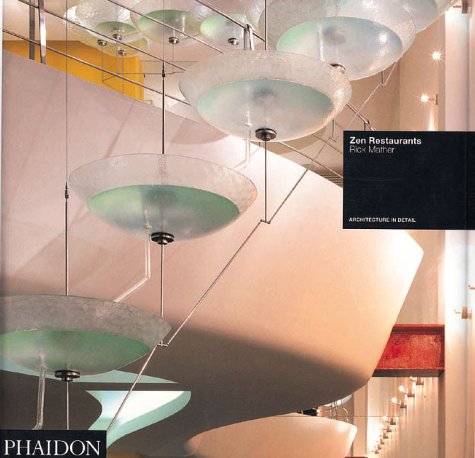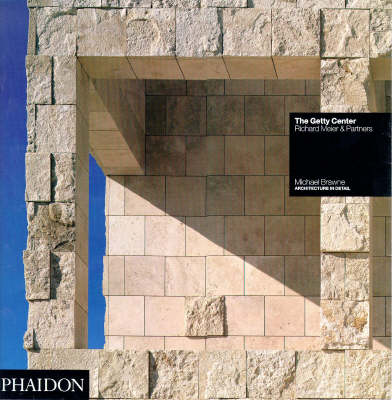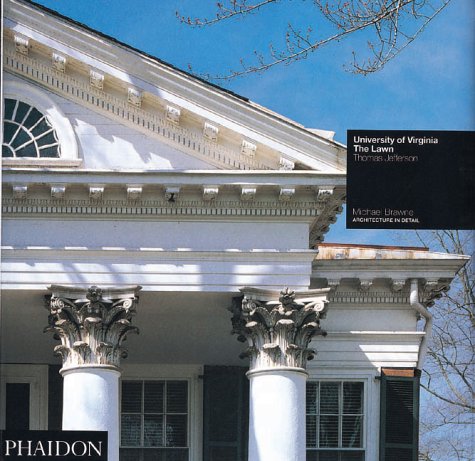Architecture in Detail
5 total works
Part of a series of technically informative monographs embracing a broad spectrum of internationally renowned buildings. This work deals with the Kimbell Art Museum, and includes a comprehensive set of technical drawings and working details.
Zen Restaurants, London, Hong Kong and Montreal, Rick Mather
by Michael Brawne
Published 16 October 1992
Mather's designs eschew ethnic reference to establish a family of coolly considered dining environments. John Welsh discusses Mather's three London-based restaurants -- ZenW3, Zen Central and Now & Zen -- as well as those in Hong Kong and Montreal.
The Getty Center opened in 1997 to great critical acclaim. Located in the Brentwood Hills above Los Angeles with spectacular panoramic views of the city and the ocean below, the Center comprises the J Paul Getty Museum, five separate arts and humanities institutions, and landscaped gardens and terraces on a 110-acre site. The complex represents a unique order of civic achievement and an intense collaboration between architect and design teams, clients and programme co-ordinators. Richard Meier has created a cultural acropolis for the twenty-first century, striking a delicate balance between humanist, classical organization and organic forms. This double-issue 'Architecture in Detail' volume, rich in new commissioned photography, provides a fascinating visual account of this inspiring cultural complex. Launched in 1991, the 'Architecture in Detail' series attracted immediate acclaim and now comprises more than 60 titles. These books are highly collectable documents, each focusing in depth on a celebrated building.
The series covers all sides of the vast spectrum of architecture from the past, present and future; the individual buildings are selected for their exceptional character, innovative design or technical virtuosity. Each volume contains a definitive text by a respected author; a sequence of colour and black-and-white photographs; a series of technical drawings; and a set of essential working details. These titles are vital to every architectural library, appealing to the professional and student alike, or indeed anyone with an appreciation of buildings.
The series covers all sides of the vast spectrum of architecture from the past, present and future; the individual buildings are selected for their exceptional character, innovative design or technical virtuosity. Each volume contains a definitive text by a respected author; a sequence of colour and black-and-white photographs; a series of technical drawings; and a set of essential working details. These titles are vital to every architectural library, appealing to the professional and student alike, or indeed anyone with an appreciation of buildings.
Thomas Jefferson was a revolutionary statesman, lawyer, ambassador, farmer, third President of the United States, and also a highly influential amateur architect. He contributed to the introduction of a new concept of classicism to his country, based on Roman precedents. His Virginia State Capitol (completed 1796 with the assistance of Latrobe) set a pattern for official architecture in the USA. Jefferson's campus design for the University of Virginia was an entirely new concept in university group planning. The epitome of Jefferson's rational yet Romantic classicism, the campus demonstrates both his enthusiasm for Palladio and admiration for Ancient Rome, which enjoyed honorific status as the birthplace of republican virtue and the seat of a mighty empire. A project dear to his heart both academically and architecturally, Jefferson's "academic village" (his own phrase) purposefully exhibited a selected variety of Roman orders. Groups of porticoed houses are linked by colonnades in a formal plan, culminating in the great Pantheon-like rotunda at the end of the oblong composition.
Along with his own house at Monticello, the University campus is recognized as Jefferson's greatest architectural achievement.
Along with his own house at Monticello, the University campus is recognized as Jefferson's greatest architectural achievement.
Museum fur Kunsthandwerk, Frankfurt Am Main 1984, Richard Meier
by Michael Brawne
Published 27 May 1992
The Frankfurt Museum for Decorative Arts is one of Richard Meier's major buildings of the 1980s. This book looks at this building which is based on Le Corbusier's Purist syntax and sets out from two existing geometries found on the site: the cube formed by the Villa Metzler (an earlier neo-classical pavilion, incorporated by Meier into the new design) and the slightly skew angle between the museum site and the riverbank. From these origins Meier created a building consisting of shifted grids, superimposed planes, reverse curves and ramps. It should be especially useful for all architects and students interested in museum design, or more generally in Richard Meier's strategies of architectural composition. The book is part of the "Architecture in Detail" series. The books do not carry a contents list. The common layout of the books in the series is: essay, photographs, specially commissioned drawings, reference details (bibliography and chronology). Each of these monographs is designed to be a complete and accurate archival record and intended to be the standard reference on that building for students and scholars as well as practising architects.



